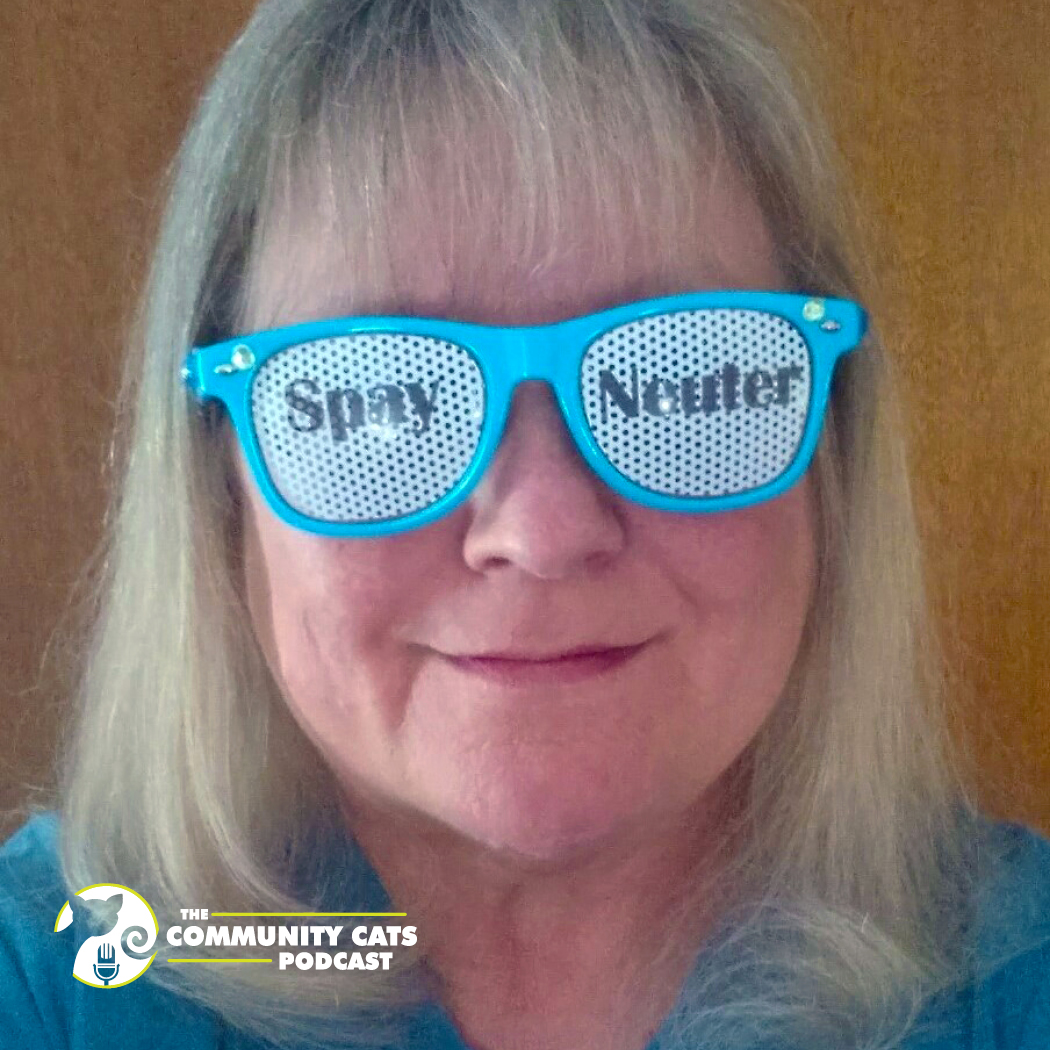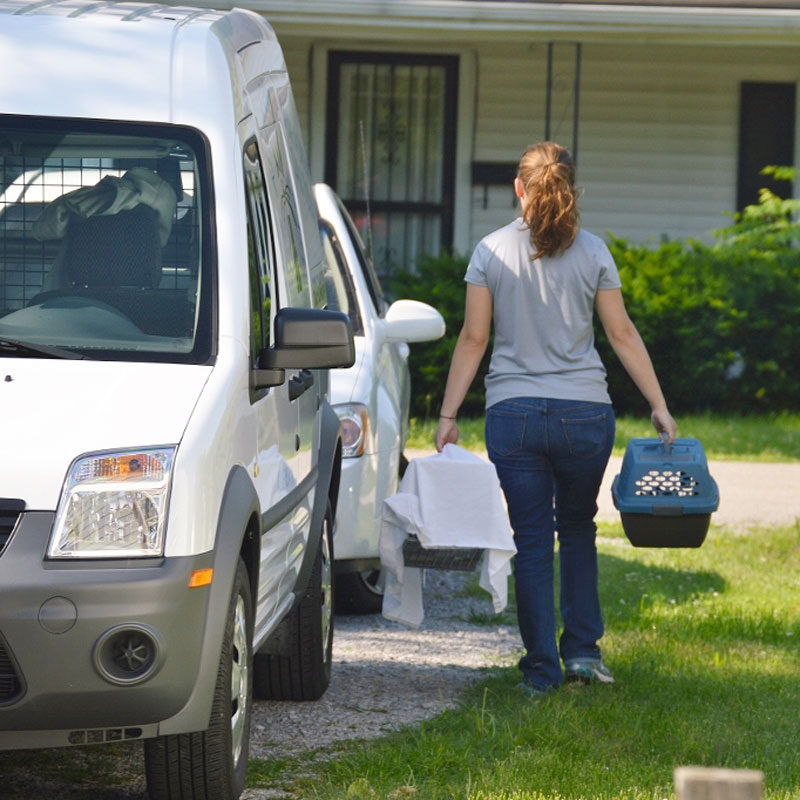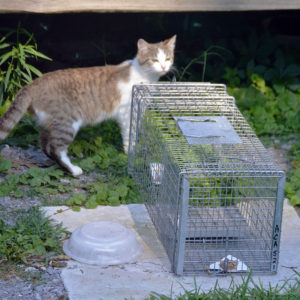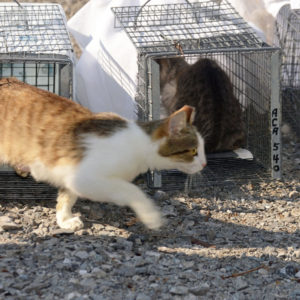
Julie Jacobson, Spay Tennessee and CCP Community Cats Grants Program
August 18, 2020
Dr. Anne Beall, Market Researcher, Animal Advocate, Author
August 25, 2020
Today’s guest post comes to us from Krista Beucler, Marketing & Communications Intern at Community Cats Podcast.
Trap-Neuter-Return (TNR) programs can be a wonderful way to deal with community cat population issues. It is important that community/feral cats get spayed/neutered and vaccinated so that their colonies don’t grow exponentially. In addition, TNR helps the existing cats live their healthiest lives and prevents the cats from exposing humans to diseases like rabies. Once adult feral cats have been trapped and cared for by vets, they are generally returned to the colony, as they are unsocialized and therefore, don’t make very good pets. Feral kittens can usually be trapped and socialized so that they can find an indoor home.
 Maybe you have a feral mama cat and several kittens living in your neighborhood. What should you do? Start by putting out food regularly so that mama gets used to coming to the feeding place—and bringing her kittens there once they’re old enough. When the kittens are 6–8 weeks old, they’ll be old enough for you to trap the whole family and bring them to your local shelter for TNR and/or adoption. To determine the kittens’ age, look to see if they are eating solid food confidently, and have all their teeth. The kittens should be coordinated and playful and their eye color will be transitioning to its adult color.
Maybe you have a feral mama cat and several kittens living in your neighborhood. What should you do? Start by putting out food regularly so that mama gets used to coming to the feeding place—and bringing her kittens there once they’re old enough. When the kittens are 6–8 weeks old, they’ll be old enough for you to trap the whole family and bring them to your local shelter for TNR and/or adoption. To determine the kittens’ age, look to see if they are eating solid food confidently, and have all their teeth. The kittens should be coordinated and playful and their eye color will be transitioning to its adult color.
Before you do anything else, contact your local rescue or shelter to see if they will be able to take the cats. They may say that are willing to take them, but only if you trap them. Now what? How do you learn to trap? What will you need?
Anyone can learn to be an effective trapper, so don’t worry. You should be able to borrow or rent a few traps from your local shelter, where they can also show you how to set and use them. You’ll also need an old sheet or towel for each trap (if the weather is hot, go with a sheet), some extra-smelly wet cat food (try mackerel or tuna to start with), and a paper plate. You’ve already created a feeding pattern, so mama and the kittens know when to come to the feeding place. The day before you plan to trap, don’t feed the cats; just leave out water. This can be hard to stand doing, but community cats will be suspicious of the traps and won’t want to enter unless they are pretty hungry, so it’s best to withhold food.
 Set out the same number of traps as there are cats that you’re hoping to trap. You may need special kitten traps because kittens are sometimes not heavy enough to trip a regular trap. Then stay in the area, but out of sight; don’t leave the traps unattended. Because kittens are more curious and less wary, it’s likely that you’ll trap the kittens before you catch mom. Once you have one or more kittens trapped, you can put the kittens in a carrier and place the rear of the trap for mom up against the door of the kitten’s carrier. Cover all but the end of the and mom will likely enter it, thinking that her kittens are inside.
Set out the same number of traps as there are cats that you’re hoping to trap. You may need special kitten traps because kittens are sometimes not heavy enough to trip a regular trap. Then stay in the area, but out of sight; don’t leave the traps unattended. Because kittens are more curious and less wary, it’s likely that you’ll trap the kittens before you catch mom. Once you have one or more kittens trapped, you can put the kittens in a carrier and place the rear of the trap for mom up against the door of the kitten’s carrier. Cover all but the end of the and mom will likely enter it, thinking that her kittens are inside.
When any cat is trapped, they will likely panic, so if your trap isn’t already covered, immediately throw a towel or sheet over it. The cat might also thrash around, which is why you should serve the bait food on a paper plate instead of a metal, ceramic, or plastic bowl.
Congratulations! You’ve trapped all your cats! Now you’ll be able to take them to the shelter for spay/neuter, vaccinations and other vet care they might need. And best of all, you’ve likely helped those kittens on their way to being adopted into safe homes! After her surgery, the mama cat can be returned to her colony.
If you’re interested in supporting your local TNR program, you can learn more about strategies for trapping at our Neighborhood Cats TNR Certification day this Saturday, August 22, 2020. You can find out more and register here. If you want more information about using a drop trap, check out this video from Community Cats and Neighborhood Cats.
 Originally from Colorado, Krista Beucler received a Bachelor of Arts in creative writing at the University of Mary Washington (UMW) in Virginia. She was the editor-in-chief for Issue 7.2 of the Rappahannock Review, the literary journal published by UMW. Krista’s creative work has been published in From Whispers to Roars literary magazine. She is spending COVID-19 at home with her cats.
Originally from Colorado, Krista Beucler received a Bachelor of Arts in creative writing at the University of Mary Washington (UMW) in Virginia. She was the editor-in-chief for Issue 7.2 of the Rappahannock Review, the literary journal published by UMW. Krista’s creative work has been published in From Whispers to Roars literary magazine. She is spending COVID-19 at home with her cats.




